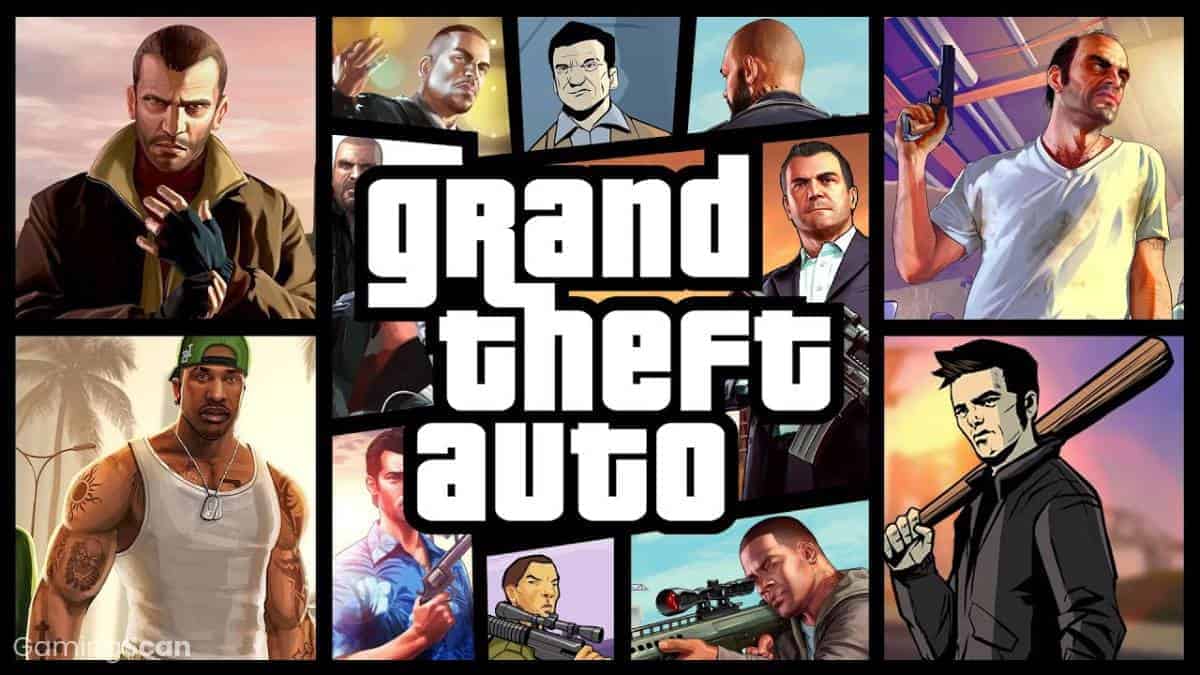You know what this is. Whether a seasoned player or an angry parent, the words Grand Theft Auto have graced your ears. This is the game that revolutionized the open-world genre as we know it, this is the game that killed the idea “video games are for kids” execution-style. Beyond the high-speed pursuits and gangster motifs, it’s a biting satire of contemporary society, laying out a playground where players script their own sagas.
With its audacious storytelling, unforgettable characters, blend of humor and drama, and ever-evolving cityscapes, this series fully redefined the idea of player autonomy while still maintaining a powerful narrative. You can play the game as a post-Goodfellas power fantasy, an urban anarchy simulator, or a do-the-job gangster with a heart of gold, it’s your choice. From the top-down view of the pixelated streets of its inception to the third-person exploration of the sprawling expanse of Los Santos, Grand Theft Auto sparks as much outrage as it does creativity.
Grand Theft Auto (1997)
- Released for PS1, MS-DOS, and Windows
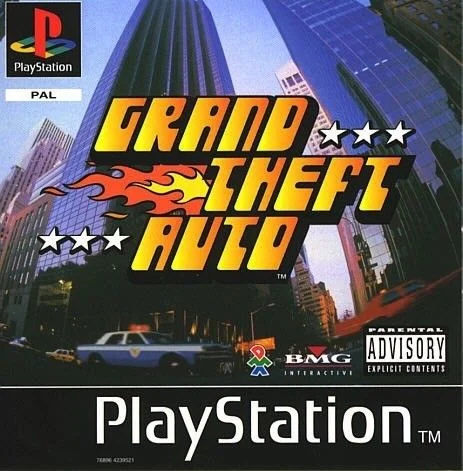
The genesis of the iconic Grand Theft Auto series began in 1997 with its eponymous debut. Players delve into the criminal underbelly of three fictional cities: Liberty City, San Andreas, and Vice City, which later serve as focal points for subsequent titles. Guided by the simple objective of accumulating points through criminal endeavors, players are granted the freedom to explore vast urban landscapes, hijack vehicles, and engage in criminal escapades, be it petty thievery or full-blown organized crime.
The inaugural Grand Theft Auto offers a top-down perspective of its sandbox cities. Its unique bird’s-eye view approach does not detract from the chaos and excitement the series becomes renowned for. It’s within these pixelated streets that players first experience the thrill of evading police chases, weaving through traffic, and orchestrating crime sprees. Despite its seemingly rudimentary graphics compared to its successors, Grand Theft Auto sows the seeds for a formula of freedom, choice, and chaos that the franchise would come to perfect and expand upon in the years that followed.
Grand Theft Auto 2 (1999)
- Released for PS1, Dreamcast, Windows, and GameBoy Advance

Two years after the groundbreaking release of the original, Grand Theft Auto 2 catapults players into Anywhere City. Divided into three districts – Commercial, Residential, and Industrial – this city pulses with neon lights and a heightened sense of futuristic disarray. The game preserves its predecessor’s top-down perspective but introduces a layer of depth with its multi-level environments, enabling players to jump between rooftops or dart beneath overpasses.
Mechanically, Grand Theft Auto 2 showcases evolution in the series’ core gameplay. It broadens the criminal landscape by weaving in the dynamics of competing gangs. Now, players must navigate the intricacies of gang loyalty, with actions for one faction potentially souring relations with another. This gang system injects a new layer of strategy into the players’ criminal exploits. Vehicle dynamics also see improvement, with cars having varying weights, making chases and escapes feel more varied and intense. While later titles would shift perspectives and increase immersion, Grand Theft Auto 2 remains a pivotal chapter, fine-tuning the chaos and free-form gameplay that are hallmarks of the series.
Grand Theft Auto III (2001)
- Released for PS2, Xbox, OS X, and Windows
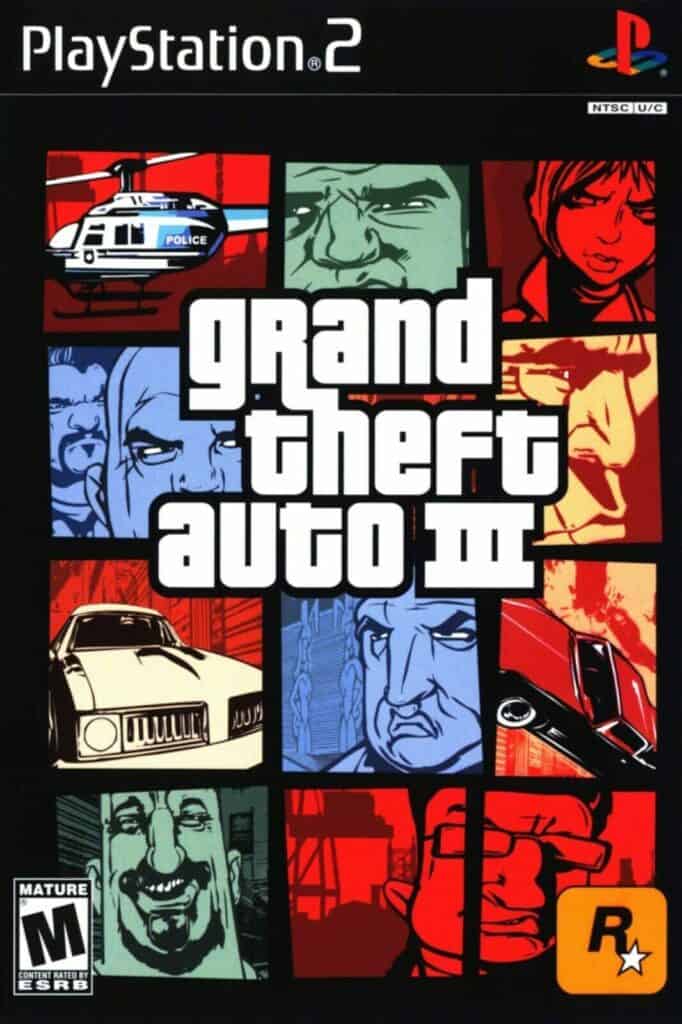
Launching players into a vivid 3D rendition of Liberty City, Grand Theft Auto III dramatically transforms the franchise’s landscape. This open-world marvel replaces the top-down view of earlier titles, immersing players in the gritty undertakings of Claude, a silent protagonist out for revenge. Liberty City’s multifaceted environment, bursting with life and echoing East Coast metropolises, establishes a playground where players experience nuanced missions, dynamic car chases, and authentic radio stations, forging the series’ renowned identity.
The evolution from Grand Theft Auto 2 to Grant Theft Auto III is monumental, heralding a shift from 2D to 3D gameplay. This evolution isn’t merely visual; mission structures diversify, offering depth and story integration, and AI behaviors attain sophistication. Graphically, environments, characters, and vehicles gain unprecedented detail, with enhanced lighting effects and richer soundscapes. Grand Theft Auto III stands not just as a series milestone but as a defining moment for open-world gaming, elevating both story and experience.
Grand Theft Auto: Vice City (2002)
- Released for PS2, Xbox, OS X, and Windows
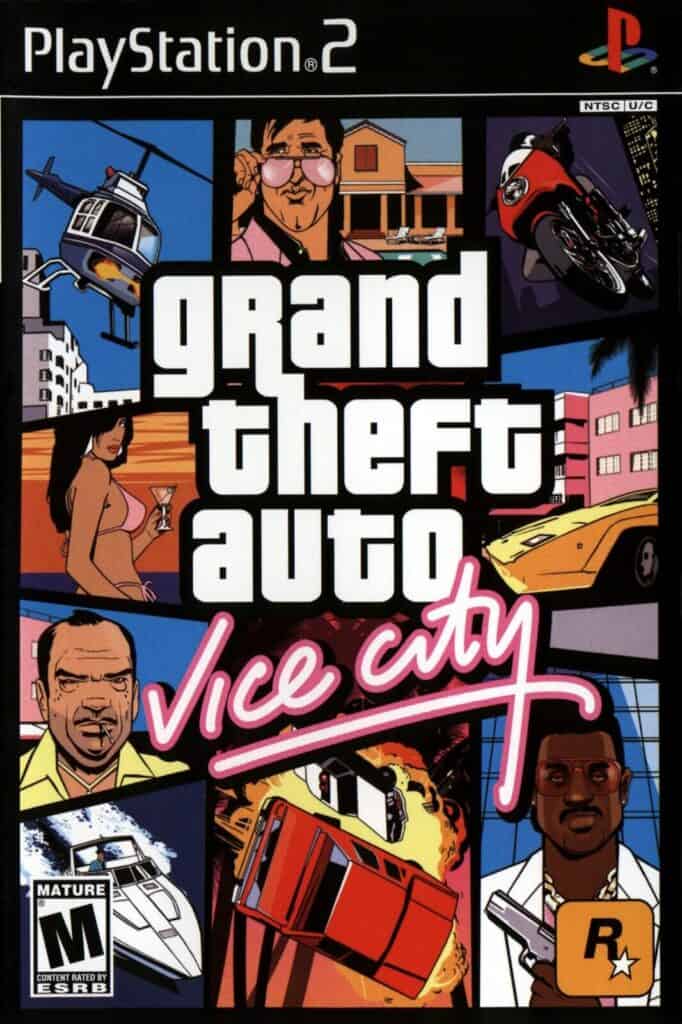
Grand Theft Auto: Vice City transports players to the neon-soaked streets of the ’80s, embodying the era’s extravagance and vices. The pastel-hued metropolis of Vice City, inspired by Miami, becomes the backdrop for Tommy Vercetti’s rise to power. Following a drug deal gone awry, Vercetti, freshly released from prison, seeks dominance in the criminal underworld, encountering vibrant personalities and diving into captivating narratives, replete with era-specific soundtracks.
Building upon Grand Theft Auto III, Vice City introduces motorbikes, helicopters, and a bevy of new vehicles, enriching the player’s traversal options. Property management emerges as a novel gameplay mechanic, letting players invest in and control various establishments. Graphically, the game boasts improved textures, character models, and reflections. Its world feels more interactive and dynamic, from pedestrians dancing to boombox tunes to the game’s myriad of outfits aligning with its flamboyant setting. The audacious spirit of the 1980s comes alive in Vice City, presenting a sequin-draped evolution of the series.
Grand Theft Auto: San Andreas (2004)
- Released for PS2, Xbox, OS X, and Windows

Grand Theft Auto: San Andreas weaves a sprawling tapestry of early ’90s West Coast urban life. From the gritty streets of Los Santos (a reimagining of Los Angeles) to the arid Badlands and the neon dazzle of Las Venturas (mimicking Las Vegas), players follow Carl “CJ” Johnson as he returns home, entwining himself in a web of gang confrontations, crooked cops, and neighborhood loyalty. A tragic family incident beckons CJ back to the gangland warfare of Grove Street. As players navigate these challenges, they uncover a plot saturated with betrayal and power struggles.
Evolving from its predecessors, Grand Theft Auto: San Andreas introduces expansive role-playing game mechanics. Players can modify CJ’s appearance, engage in various mini-games, build relationships, and even adapt physical attributes through activities like eating and exercising. A richer array of vehicles, including bicycles and planes, supplements the player’s journey across this vast state. Graphically, the game amplifies environmental details and character animations, while the narrative’s depth and the introduction of controllable territories offer a multi-dimensional, immersive experience that pushes the boundaries of the series.
Grand Theft Auto Advance (2004)
- Released for the GameBoy Advanced
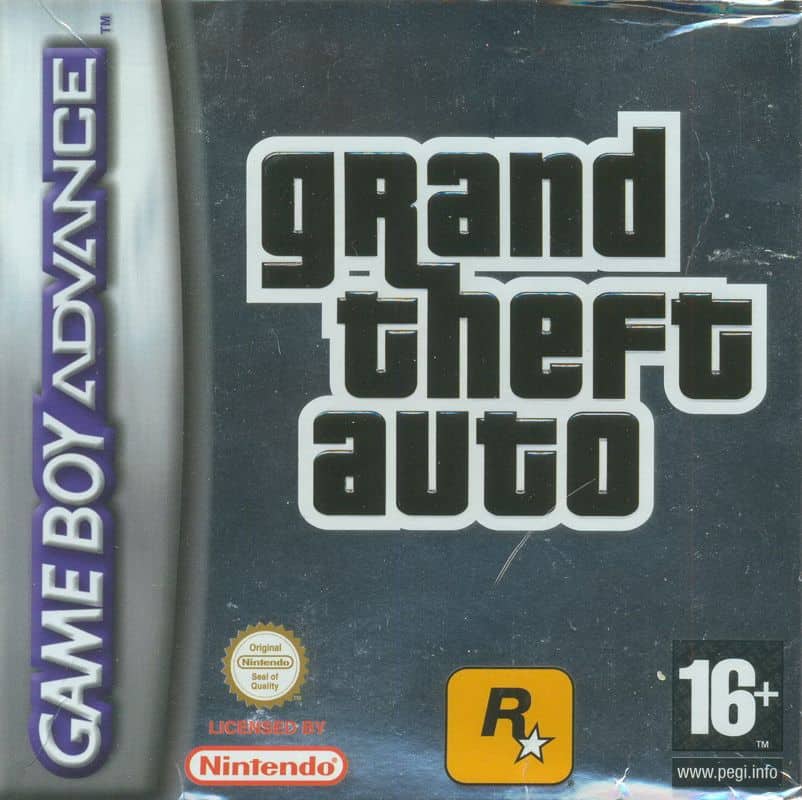
Released alongside Grand Theft Auto: San Andereas, Grand Theft Auto Advance offers a bite-sized GTA experience. Set in Liberty City, a year before Grand Theft Auto III, the game follows Mike – generic gangster #3 – navigating a top-down city reminiscent of the series’ earliest titles. Despite hardware limitations, Rockstar delivers the quintessential GTA chaos Adapting gameplay for the handheld’s unique controls, it controls fluidly.
Grand Theft Auto: Liberty City Stories / Vice City Stories (2005/2006)
- Released for PSP and PS2
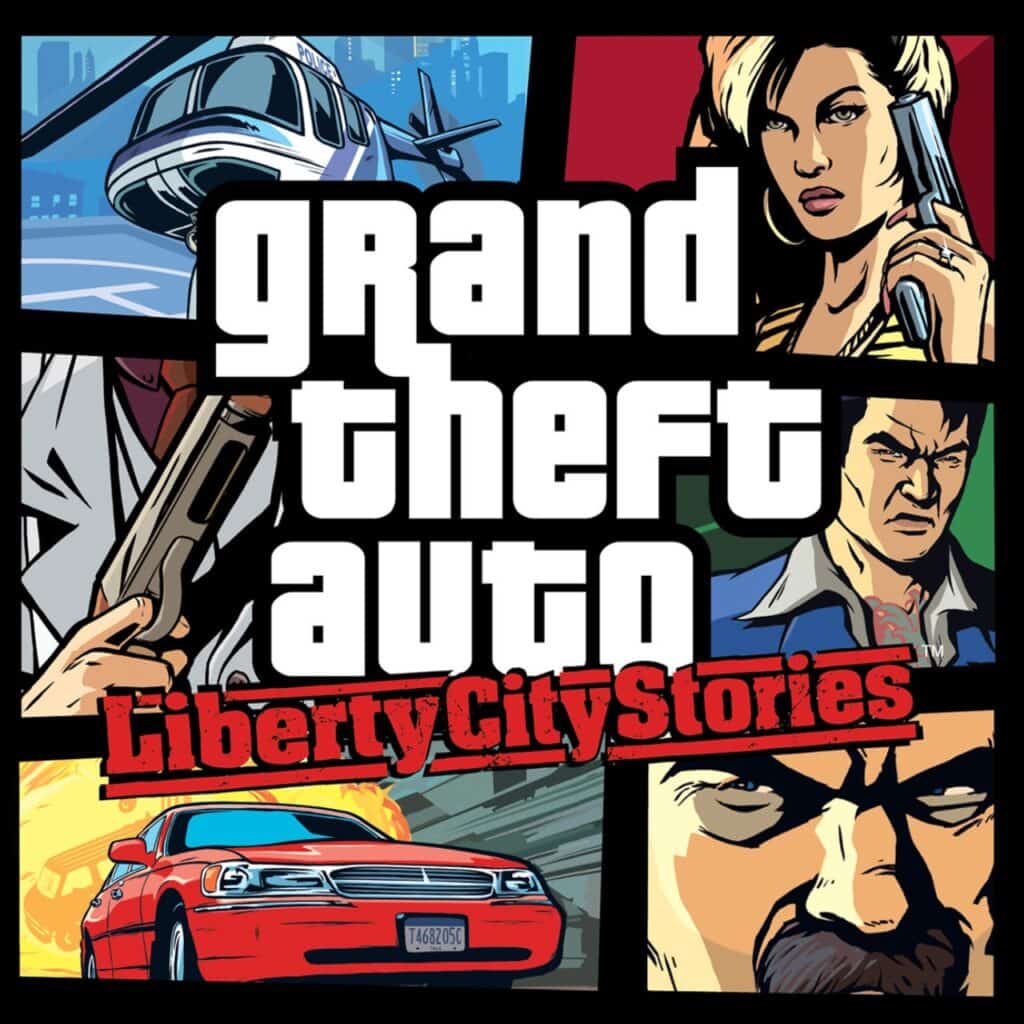
Grand Theft Auto: Liberty City Stories and Grand Theft Auto: Vice City Stories serve as prequels to Grand Theft Auto III and Vice City, respectively. These games retain the expansive open-world design of their primary console counterparts but introduce fresh stories.
In Grand Theft Auto: Liberty City Stories, players dive into the shoes of Toni Cipriani. This entry enriches the lore of the franchise, setting the stage for the events of Grand Theft Auto III. Technically, the game sees mobile-optimized controls, making navigation and shootouts feel intuitive on touchscreen devices.
Grand Theft Auto: Vice City Stories focuses on Victor Vance’s story. The game refines vehicle physics, notably in the motorbikes, making them feel more grounded. A business management mechanic is introduced, allowing players to build and maintain various properties, a precursor to the mechanics seen in later titles like Grand Theft Auto V.
Grand Theft Auto IV (2008)
- Released on PS3, Xbox 360, and Windows
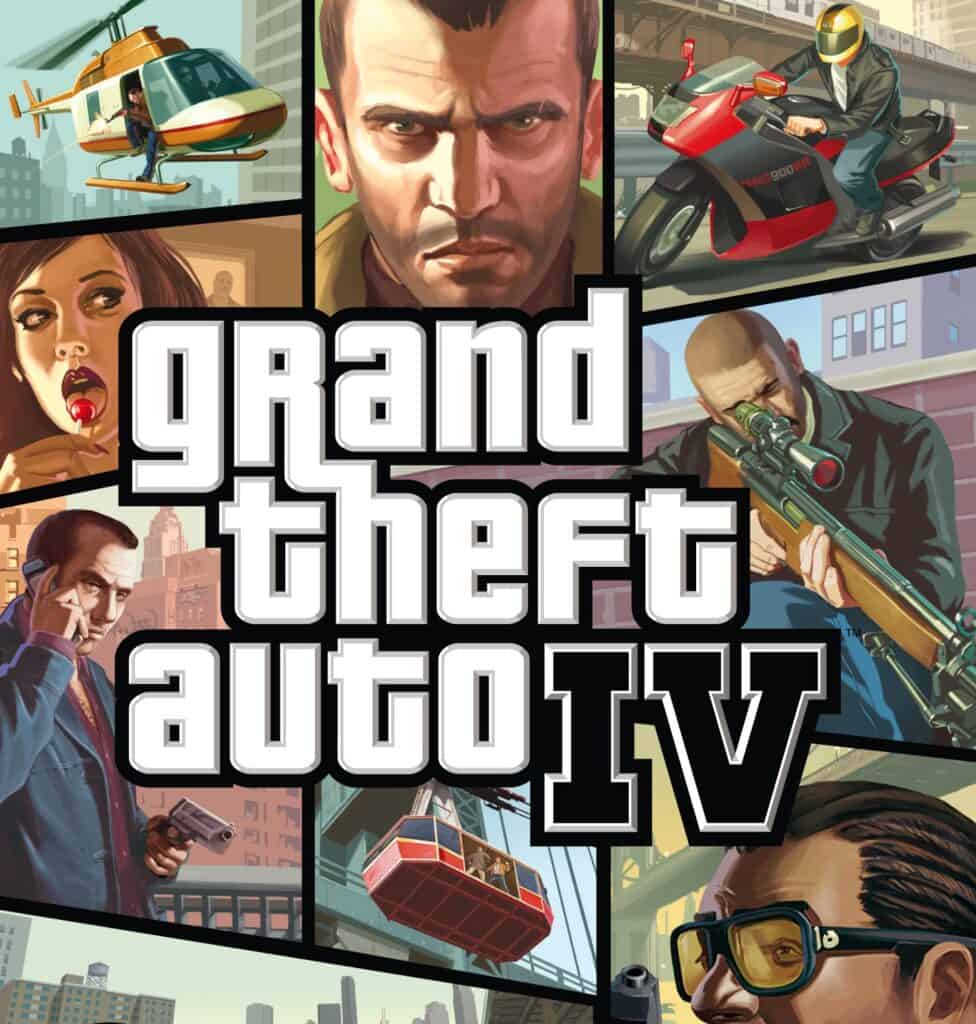
Situated in the rain-soaked streets and towering skyscrapers of Liberty City, a reflection of modern-day New York, Grand Theft Auto IV is the story of Niko Bellic, an Eastern European immigrant entangled in a life of crime, as he searches for a better life and confronts ghosts from his past. The gripping narrative, underscored by themes of family, betrayal, and the elusive “American Dream,” sees Niko navigating the underworld, undertaking tasks for diverse criminal masterminds, and making pivotal choices that sculpt the story’s outcome.
Diverging from its forebears, Grand Theft Auto IV offers a more grounded and intricate gameplay experience. The game boasts a novel physics engine, the Euphoria, which produces lifelike character movements and reactive environments. Vehicle mechanics feel weightier, reflecting the complexities of real-world driving. Gunplay takes a leap forward with a fresh cover system, and hand-to-hand combat becomes more nuanced. Interactivity extends to engaging with the in-game internet, watching TV shows, and forging relationships, reinforcing immersion. These changes, paired with a cinematic narrative and meticulously detailed world, mark a transformative phase for the series.
Grand Theft Auto: Chinatown Wars (2009)
- Released for PSP and Nintendo DS
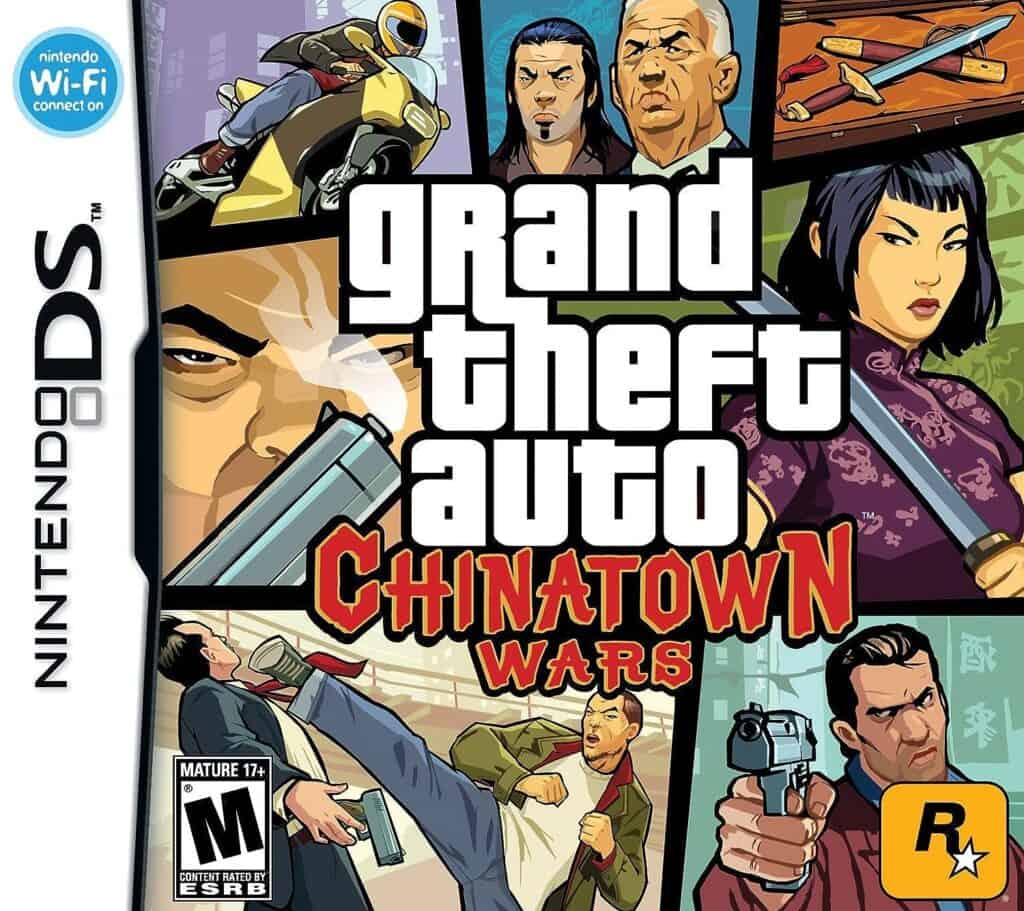
Taking a bold step back to its roots, Grand Theft Auto: Chinatown Wars reintroduces players to a top-down perspective of Liberty City. Players navigate the treacherous path of Huang Lee as he attempts to restore his family’s honor amidst betrayal and power struggles. One defining feature is the intricate drug-dealing system, turning the economy of crime into a central gameplay element. The dynamics of trading, evading the police, and rival encounters offer a new risk-reward balance.
On the technical front, Chinatown Wars skillfully marries the tactile capabilities of mobile platforms with engaging mechanics. Activities such as hot-wiring cars become touchscreen mini-games, drawing players deeper into the criminal world. The game’s art style, though nostalgic, radiates with contemporary freshness, painting a Liberty City that’s both familiar and innovative.
Grand Theft Auto 5 (2013)
- Released for PS3, PS4, Xbox 360, Xbox One, and Windows
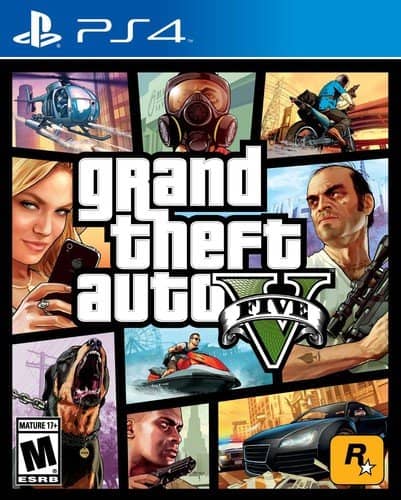
In Grand Theft Auto V, players once again delve into the heat of Los Santos. With a groundbreaking narrative approach, the game interlinks the destinies of three protagonists with starkly contrasting personalities and motivations: Michael’s search for a semblance of stability after a life of crime, Franklin’s quest to rise above the low-level street thuggery he’s known, and Trevor’s manic, unpredictable rampages. The convergence of their stories not only keeps players on their toes but stands testament to Rockstar’s innovative narrative direction.
Beyond its narrative depth, Grand Theft Auto V flaunts significant advancements in gameplay and graphics. The game world feels alive, with a level of detail that surpasses all its predecessors combined. Los Santos and its surrounding Blaine County offer diverse environments, from congested urban streets to expansive deserts and deep oceans. Players can also switch between characters at nearly any time, each offering unique abilities and missions. Rockstar didn’t stop at the single-player, either. Grand Theft Auto: Online became a massive multiplayer extension, evolving over years with new heists, modes, and activities, reinforcing Grand Theft Auto V as a pinnacle of open-world gaming.
